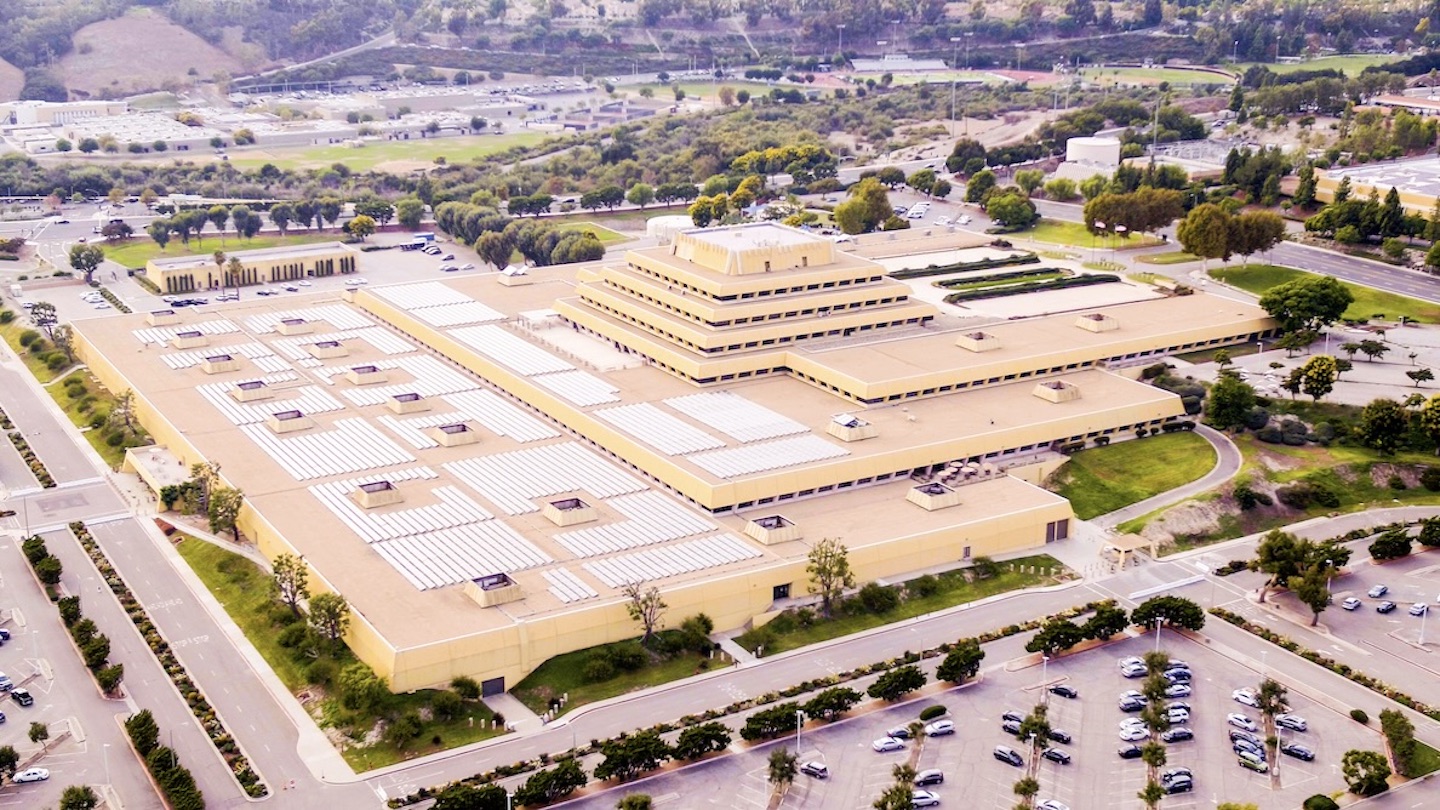If you’re a fan of 1980s action movies, you might be forgiven for thinking the building pictured above looks familiar. While it may look like a rogue CIA headquarters from a TV show, the Chet Holifield Federal Building — better known as the ‘Ziggurat’ building — in California has a fascinating history tied to the U.S. aerospace industry of the Cold War.
And it can be yours!
The building, which is located in Laguna Niguel, California, initially caught our attention because it’s currently listed for auction on the U.S. General Services Administration (GSA) website. According to the GSA, which manages Federal property and provides contracting options for government agencies, the building has “served its purpose for Federal mission needs,” and is “no longer financially viable as a Federal building.” Moreover, the GSA listing states that a “historic preservation easement” over a “portion of the property” equating to just over 26 acres must be executed by the new owner in order to preserve the building.
The compound, which also includes a services support building, fleet area and service yard, two guard houses, and an expansive car park, is over 89 acres in total. For all those interested, the bidding starts at $70 million, with a soft-close date of April 12.

The origins of the Chet Holifield Federal Building date back to the 1960s. At a time when the U.S. aerospace industry was rapidly growing, then Los Angeles-based North American Aviation was in the process of moving its Autonetics division to Anaheim, California. Having previously developed legendary aircraft like the T-6 Texan trainer, the P-51 Mustang fighter, and the B-25 Mitchell bomber, North American Aviation was by then deep into the jet age and in need of larger facilities to keep at pace with industry demands. This was only exacerbated by the Vietnam War. As early as 1966, the company selected the Laguna Niguel area, owing to its accessibility and seclusion, for its Autonetics’ Data System Division.
In 1967, North American Aviation merged with Rockwell Standard to become the North American Rockwell Corporation (known simply as ‘Rockwell’). Rockwell went on to purchase 1,340 acres from the Laguna Niguel Corporation for its new premises. William L. Pereira, the founder of William Pereira & Associates Planning & Architecture, was hired to design Rockwell’s new building there.

William Pereira & Associates Planning & Architecture was established in the late 1950s, following Pereira’s work with fellow architect Charles Luckman at Pereira & Luckman. By the mid to late 1960s, Pereira was well-known for his modernist architectural design. Notable designs of Pereira’s, some of which could be described as ‘Brutalist’ architecture while others followed more of an ‘Internationalist’ style, at that stage included the San Diego International Airport (1959), Los Angeles International Airport’s ‘Theme Building’ (1961), the Jack Langson Library, University of California, Irvine (1965), and the Transamerica Corporation headquarters building, Los Angeles (1965). Arguably his most famous design, the Transamerica Pyramid in San Francisco, was completed in 1972.

In hiring a brand name such as Pereira as the building’s architect, Rockwell was no doubt looking for a facility at the cutting edge of aerospace modernism, and one that could compete with the facilities of emerging aerospace heavy-weights. At Pereira & Luckman, Pereira designed Convair Astronautics’ sprawling Atlas ICBM missile program center in San Diego, California (1958). He also designed Ford’s Aeronutronic division in Newport Beach, California (1958) and General Atomics’ facilities in La Jolla, California (1958). Later, he designed Lockheed’s Research and Development Center in Rye Canyon, North Los Angeles (1968). These buildings had to present a bold and striking image in order to attract the best and brightest to work for Southern California’s aerospace companies.

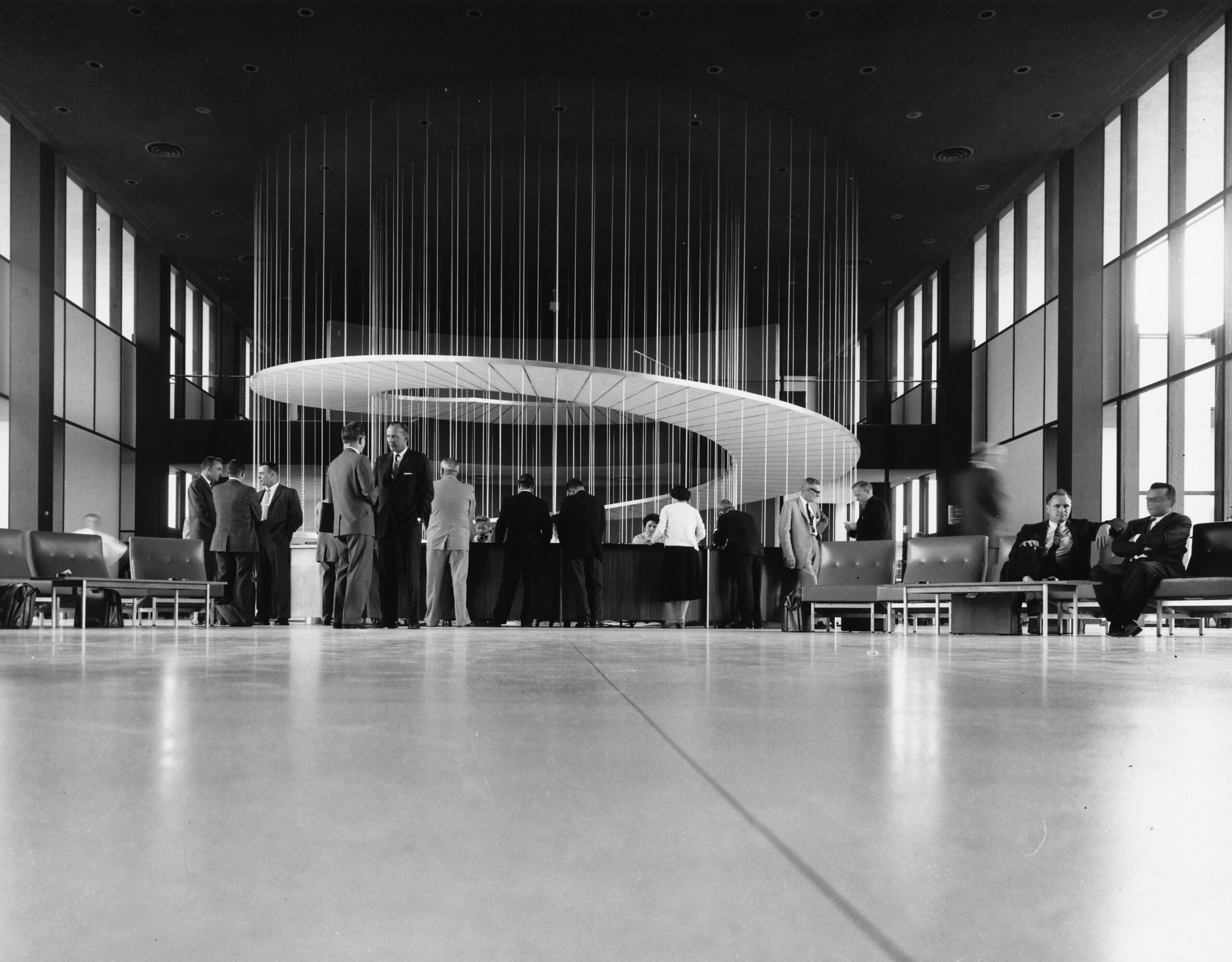
Pereira’s concept for Rockwell’s premises at Laguna Niguel was no different. In fact, he took inspiration from ancient architectural structures known as ‘Ziggurats.’ Ziggurats originate from ancient Mesopotamia, and typically feature a rectangular base with a raised trapezoid-like temple – an example of which can be seen below.
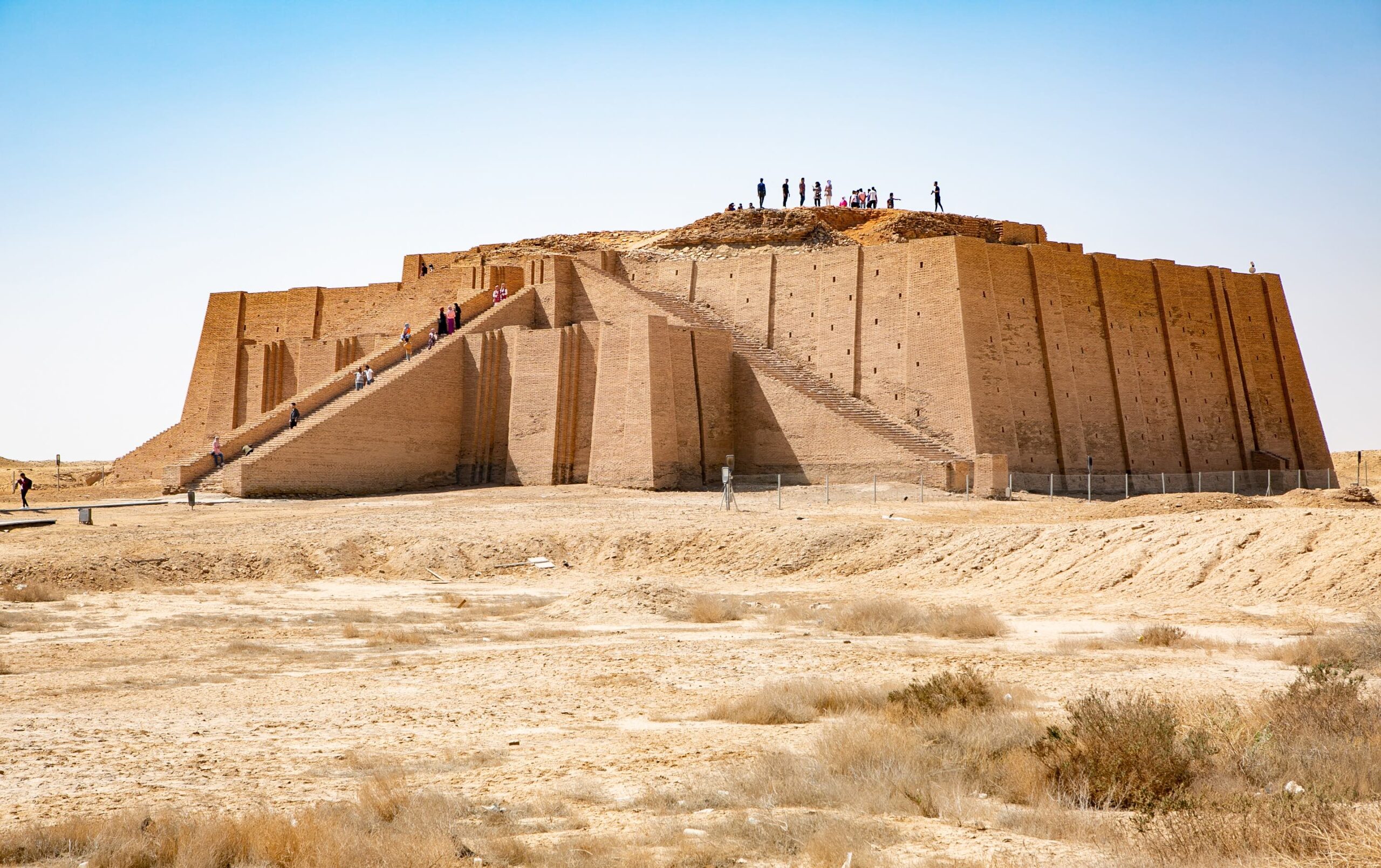
The nearly one million-square-foot building designed by Pereira boasts seven stories. The exterior features bold edges, exposed concrete, and recessed windows typical of Pereira’s architectural style. The structure is constructed of angled, painted pebble-textured concrete panels, and has a lateral force-resisting system consisting of concrete shear walls, GSA indicates. Early images of the building from the 1970s, contrasting with more recent photos taken by the GSA, can be seen below.
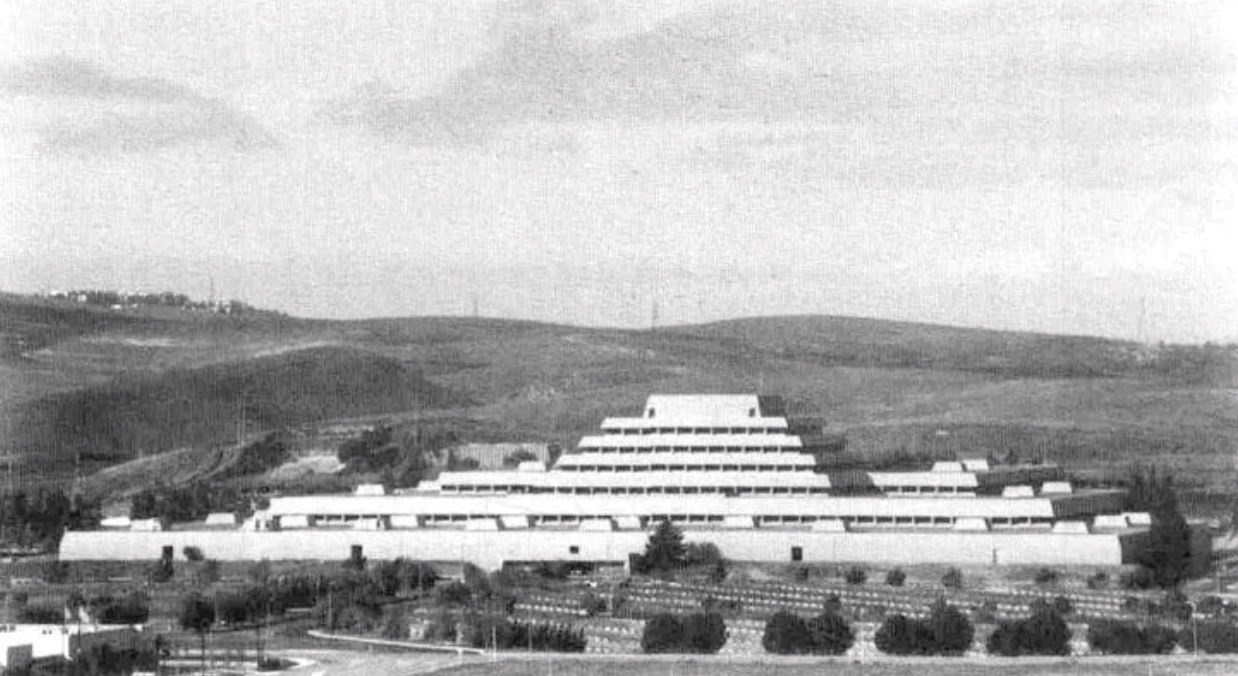
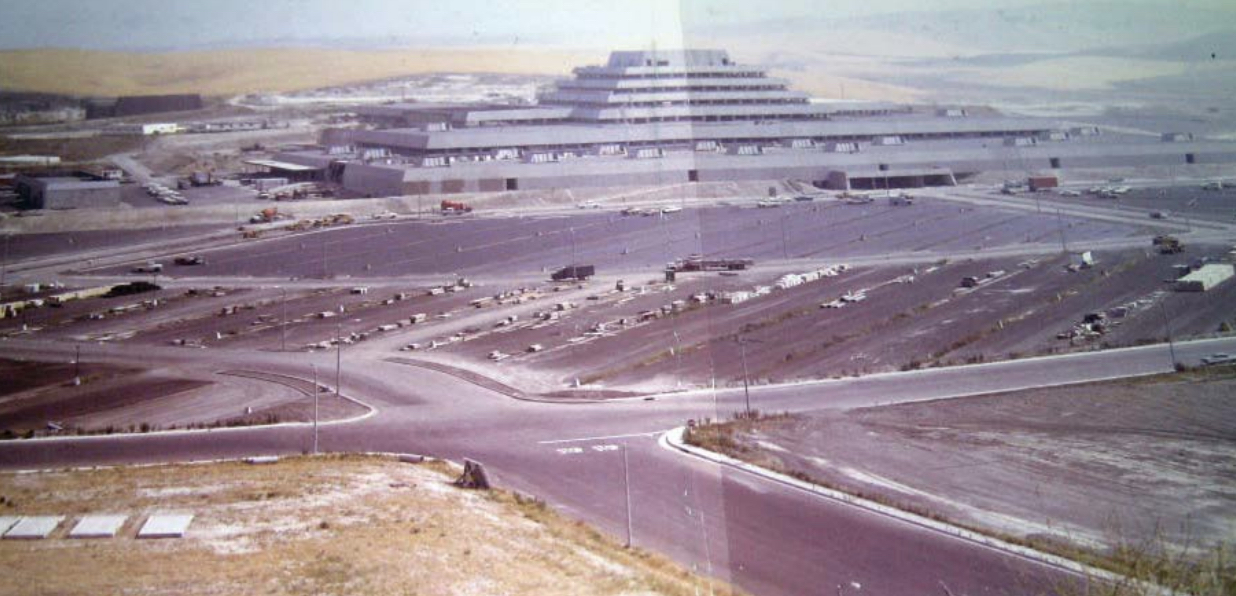
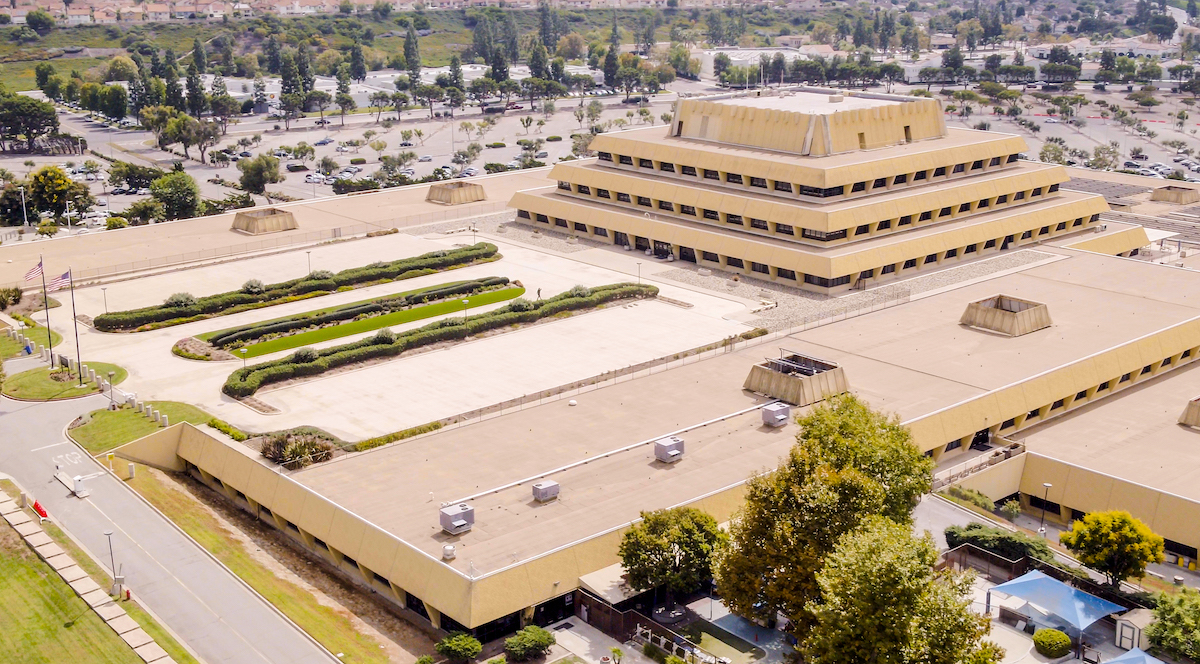

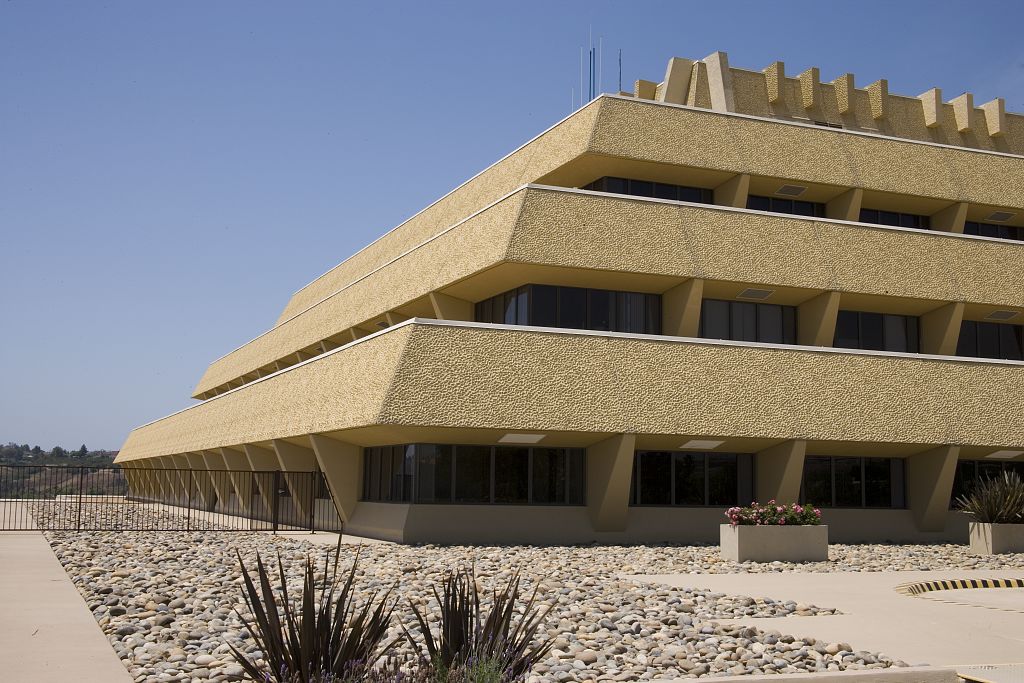
Similar to his work with Convair Astronautics and others, Pereira also designed the inside of the building. Bold, modern geometric shapes can be seen throughout. The interior of the building also features wide-angle spaces, no doubt intended to present a modern, expansive mid-century feel.

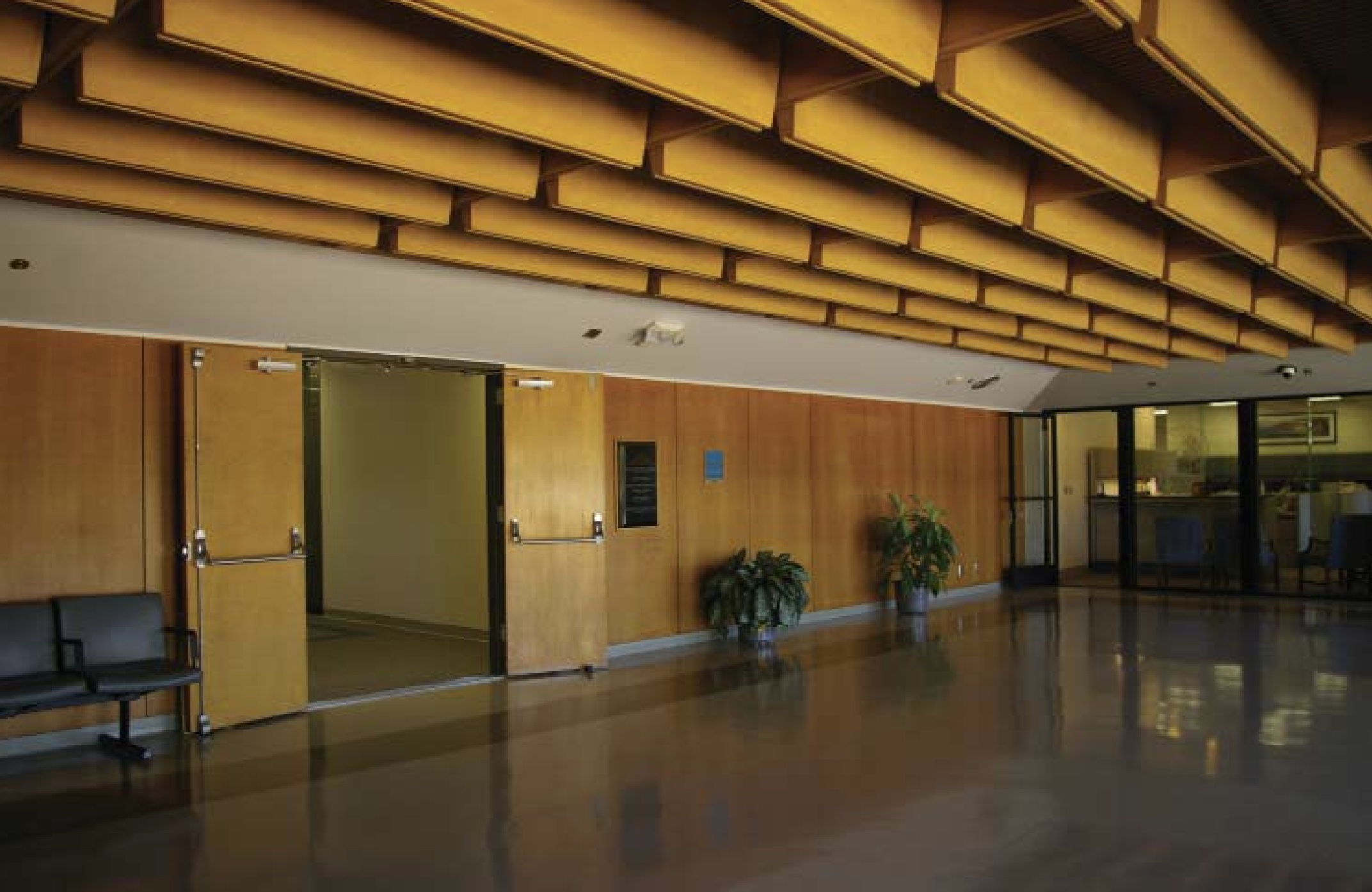
Construction of the building began in 1968, when Rockwell offered Huber, Hunt, and Nichols, Inc. an $18.5 million contract to bring Pereira’s design to life. The building was built by 1971. Rockwell had planned on using the various levels of it for different purposes; the lower floors for electronics manufacturing and assembly, the middle floors for engineering, and the top floors for management offices.
However, as the aerospace industry hit a rough patch in the early 1970s, Rockwell ended up abandoning the building soon after it was constructed and it remained unoccupied from 1971-1974. In 1974, Rockwell negotiated a deal with the GSA to trade the building for surplus Federal government facilities of equal value. In 1978, the building was renamed the Chet Holifield Federal Building in honor of former Congressman Chester Earl Holifield, a specialist in atomic energy influential in legislation enabling the development of military and peacetime nuclear programs.
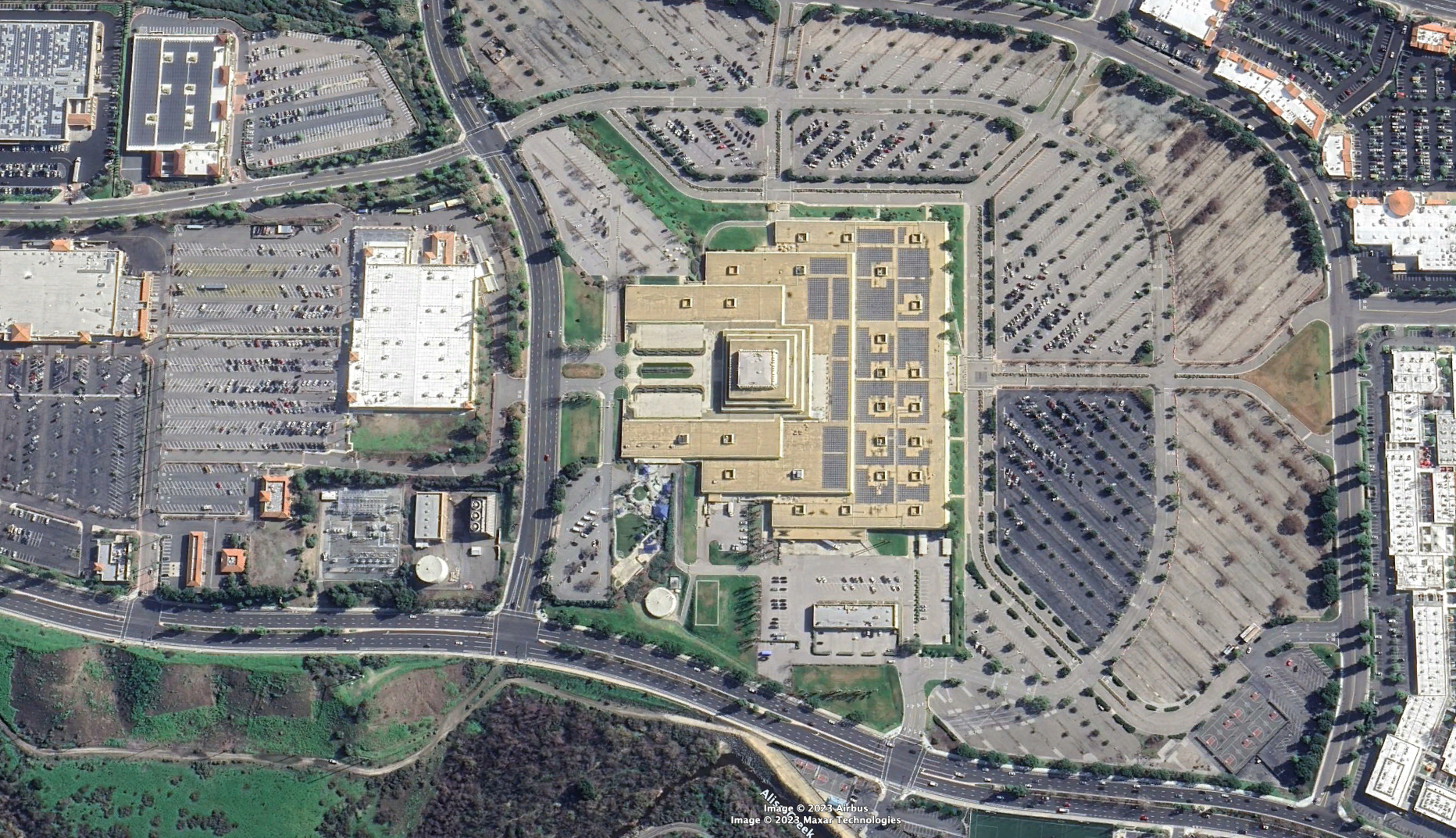
Since the mid 1980s, the building has undergone several renovations to improve facilities for the various Federal agencies occupying it. As of 2020, the building was supposedly operating at about half capacity across several government agencies, holding 3,000 employees from the Treasury Department, Citizenship and Immigration Services, ICE, and others.
For a time, at least, the Chet Holifield Federal Building and other structures designed by Pereira represented something truly futuristic, even into the latter twentieth century. Indeed, one only has to look at the ’24th century’ cityscape matte painting scenes featured in Star Trek: The Next Generation to see similarities to the Chet Holifield Federal Building, notably the recessed windows, geometric shapes, and large concrete facades.
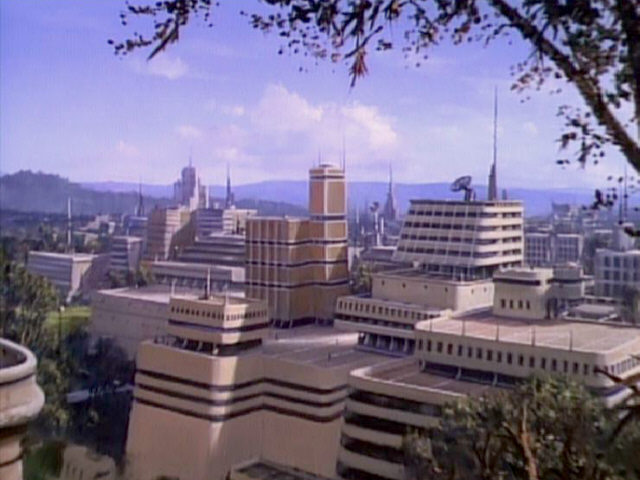
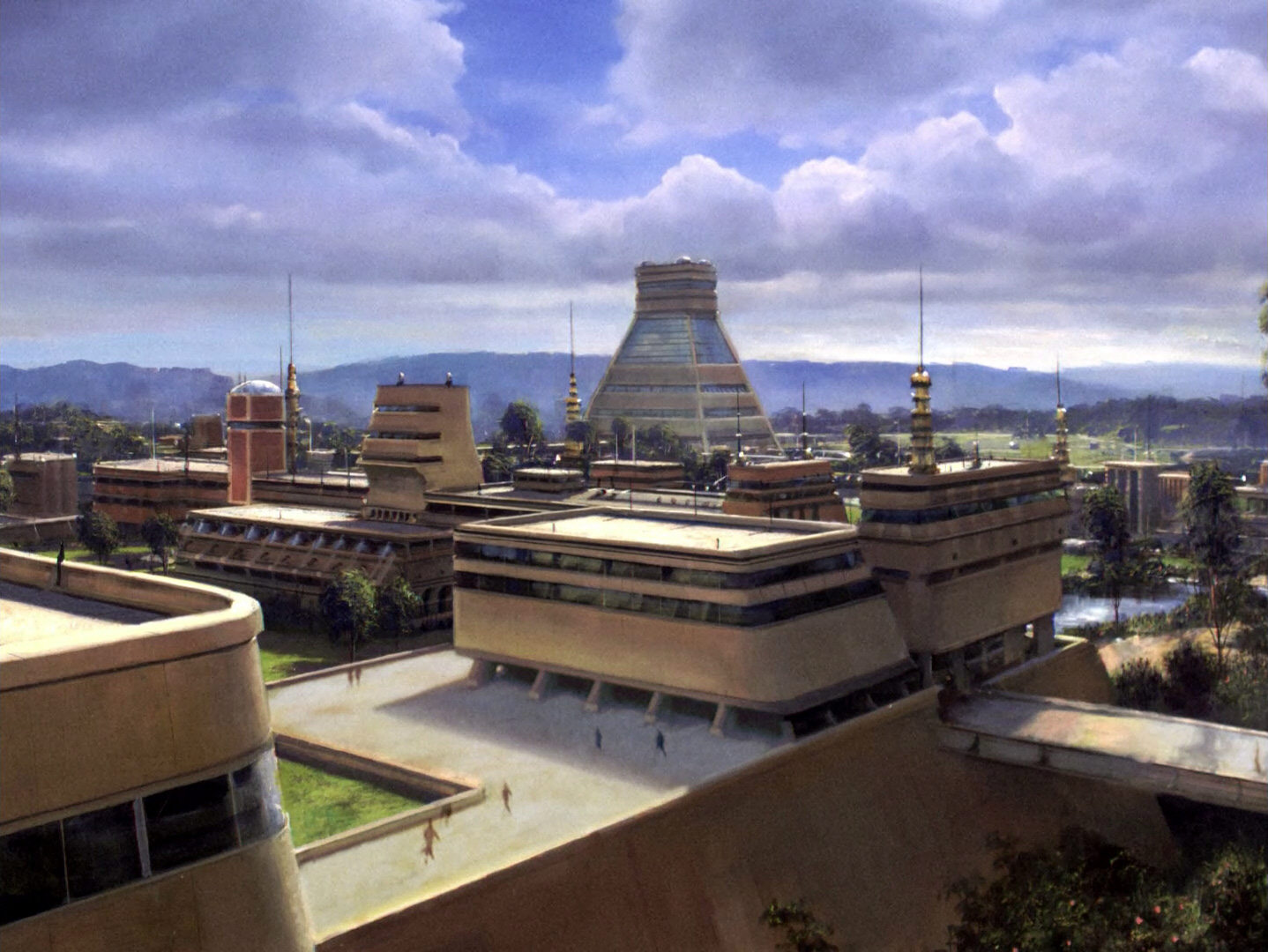
The ‘Ziggurat’ building has appeared in several feature-length movies, owing to its unique and futuristic aesthetic. It can be seen in the mystery thriller Coma (1978) and the action-adventure movie Outbreak (1995) starring Dustin Hoffman, Rene Russo, and Morgan Freeman. The ‘Ziggurat’ also appeared in the 1975 film Death Race 2000, starring David Carradine and Sylvester Stallone. Set in the year 2000, the film’s transcontinental road race ends outside the Chet Holifield Federal Building, no doubt chosen because of its modern and quirky appearance.

Probably the most ironic of the movies filmed there was the comedy film Deal of the Century (1983) starring Chevy Chase and Sigourney Weaver. The film was about a huge shady defense contractor selling advanced drones to a dictator. Quite the fit for a building with the ‘Ziggurat’s’ origin story.
More recently, however, several buildings designed by Pereira are facing uncertain futures. The former Los Angeles Times building in downtown LA, completed in 1978, for example, has seen its fair share of exposure to the threat of demolition in recent years. Indeed, before being offered for auction with the preservation easement, it was suggested that the Chet Holifield Federal Building may have ended up being demolished due to the level of investment needed to modernize the aging structure – not to mention that it’s supposedly riddled with asbestos. Property values in that area of California are certainly not cheap, either, making redevelopment of the site more likely.
That being said, the Chet Holifield Federal Building represents an important part of architectural history and the history of the U.S. aerospace industry. And yes, it would be one absolutely awesome lair for a billionaire with a serious love for 1980s action TV shows and movies.
Contact the author: oliver@thewarzone.com
